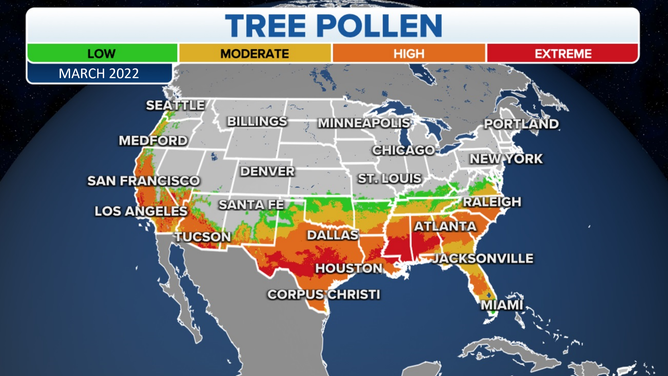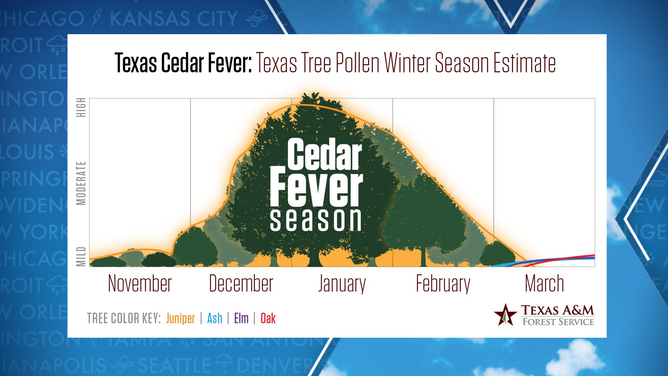Pollen levels creep up as winter’s arctic blast becomes a distant memory
Experts believe trees are starting the "leaf out" process earlier during the spring due to a warming climate, creating higher pollen counts in several parts of the country.
Spring allergies and pollen—How to protect yourself
Dr. Gina Coscia of Northwell Health on the best ways to beat sneezing and sniffling this spring.
Signs are already in the air, and sniffles will undoubtedly soon start in the areas of the country where trees are beginning to pollinate due in part to a weather pattern flip as areas of the southern U.S. see unusually warm temperatures during the heart of winter.
Reporting sites in Florida and Texas show increasing amounts of pollen, but experts say it is because of the climate and makeup of vegetation.
The Sunshine State is typically the first to start the leaf-out process due to increasing amounts of daylight and warmer temperatures, but pollen levels in the Lone Star State can be high during the winter months due to cedar trees.

Dr. Purvi Parikh, an allergist and immunologist with the Allergy Asthma Network, is not surprised by the early reports.
"We've been seeing a general trend like for the last few decades where pollen seasons getting longer and more potent," said Parikh. "Because of the higher levels of carbon dioxide, the plants are producing more pollen, higher levels of pollen, too, and that correlates with potentially worse symptoms."
Allergy specialists estimate at least 50 million Americans suffer from allergies, with many more who are affected and never adequately diagnosed or treated.
WHY SEASONAL ALLERGIES ARE BECOMING WORSE?
Florida's pollen levels increasing
It is no surprise that the Sunshine State has already started to see an uptick in activity. Central Florida annually ranks as the top pollen capital of the United States.
Common sources are from oaks, pines and elms as the vegetation begins its reproduction process.
Experts say some models and observation methods for what is known as the leaf-out period do not necessarily pick up on early season activity, which can be aided by unusual warmth.
The USA National Phenology Network, a group made up of observers and experts that monitors climate impacts on the U.S., annually releases maps on the stages of the leaf-out process. A spokesperson said South Florida typically starts to show up on maps towards the end of January and will continue throughout the late winter and spring.
ACHOO! HOW YOU CAN MANAGE SNEEZING, ITCHY EYES AND OTHER FALL ALLERGY SYMPTOMS

An example of a tree pollen map from March 2022
(FOX Weather)
Texas usually sees a winter peak of pollen
The Texas A&M Forest Service reports levels of pollen are high in the Lone Star State thanks to mountain cedar trees.
The pollen causes what is known as cedar fever – an extreme allergy that causes symptoms similar to the flu.
"Cedar fever is the worst west of I-35, where you have primarily juniper mixed in with oaks and some other species," said Jonathan Motsinger, an operational head at Texas A&M Forest Service. "And because all of those junipers are producing pollen at the same time, you're going to get a higher concentration of pollen in the air."

Texas pollen levels
(FOX Weather)
The forest service said these trees typically begin producing pollen in mid-December, and events are typically triggered by cold fronts.
The USA National Phenology Network is inviting observers in Texas to submit reports of pollen through its Pollen Tracker campaign.
The group says observations will contribute to their allergy season forecasts which are expected to be released nationally in the coming weeks.
